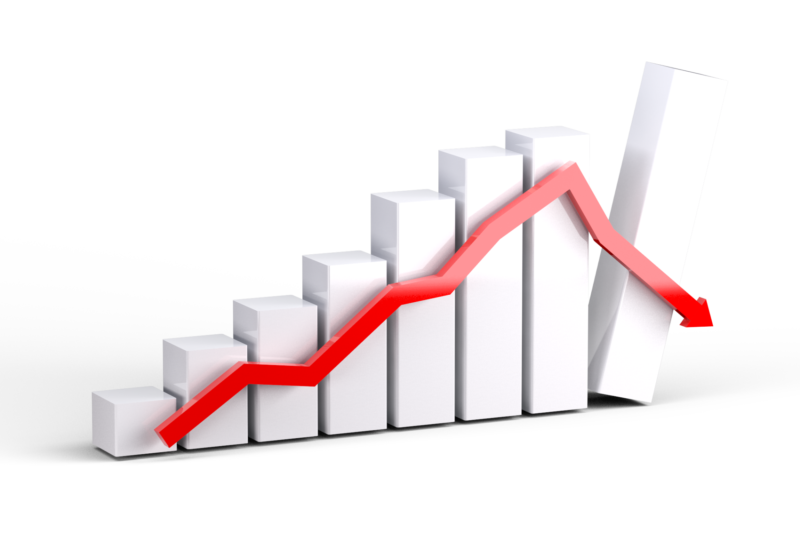Investments don’t move in a predictable pattern. They take dramatic upswings and downswings that can rattle many investors.
Every investor squares off against investment volatility. Some people panic and sell low. Others ride the wave and make money during periods of uncertainty.
Navigating investment volatility will make you a better investor. You’ll minimize your downside and discover opportunities.
We’ll share the complete guide to investment volatility so you can beat the market.
What Is Investment Volatility?
Some people mistakenly view investment volatility as losses. Instead of referring to losses, volatility covers asset price swings.
An asset that goes from $100 to $50 and up to $120 has significant volatility. An asset that stays between $100 and $102 for months has minimal volatility.
Traders pick stocks with high volatility to capitalize on price fluctuations. You can use a stock’s beta coefficient to determine its volatility.
Every stock’s volatility gets measured against the S&P 500. A beta coefficient of one indicates the stock has the same volatility as the S&P 500.
Beta coefficients below one indicate less volatility. Beta coefficients above one indicate higher volatility than the S&P 500.
Assess Your Risk Tolerance
High beta stocks move like roller coasters. They can swing five percent in a given day. These stocks can significantly outperform the market or leave your portfolio in the dust.
Before investing in stocks, consider your risk tolerance. How long can you wait for a stock to rebound?
Investors approaching retirement often choose less volatile stocks. They will sacrifice significant gains in exchange for safety.
Investors with more time to spare before retirement often choose volatile growth stocks. They swing for the fences and hope their stocks lead to a comfortable retirement.
Use Dollar Cost Averaging To Reduce Cost Basis
Your cost basis reflects the average purchase price of each share. Suppose an investor buys a share at $100 and another share at $90. That position’s cost basis is $95 across the two shares.
Using all of your money to build up positions in one go prevents you from capitalizing on dips. Volatile assets have dramatic price swings.
You can use downward pressure to build your position. This investing approach increases your gains during the recovery.
Some investors take a percentage of their weekly paycheck and invest it into stocks. Consistent investments let you capitalize on the best and worst times.
Diversify Your Portfolio
Some stocks fall faster than others. Various price fluctuations make some dips more attractive than others.
Diversifying your portfolio lets you discover more opportunities while lowering risk. Other positions can compensate if one of your stocks performs poorly. Going all-in on a single investment carries significant risk, especially if it’s volatile.
Some people diversify by investing in alternatives. These alternatives lower risk and make you less reliant on the stock market.
Investors can diversify across several sectors and companies. Buying index funds and ETFs gives you a basket of companies and reduces your research.
Don’t Obsess Over Your Portfolio
The most reliable portfolios are often boring. Investors buy, hold, and don’t do much else.
These investors do not try to time the market. They don’t spot opportunities by reviewing price fluctuations.
Checking your portfolio won’t help you contribute to it. Investors relying on their portfolios for retirement should focus more time on career growth.
Investors shouldn’t check their portfolios more than three times per day unless it’s their profession.
Making more income with a side hustle provides more money to buy the dips. Only invest money you don’t need to touch for several years.
You can pick less risky assets such as bonds for money you’ll need in a few months. Any positive return is better than letting your money sit in the bank. These low-risk assets assure you’ll have the money when you need it.
Traders Can Set Stop Losses To Minimize Losses
The stop loss feature helps many traders lower their risk. A stop loss sets a limit on how much you can lose.
Stop losses let you automatically sell shares once they reach a set price. If you buy at $100 and set a stop loss at $99, you’ll sell at $99.
This trade takes place even if you do not manually sell your shares. Traders can also set limit orders to sell at a certain price.
Traders can set a limit order at $102 to sell shares at that price point. This order would represent a two percent upside on the $100 purchase.
These measures let you make a few trades and walk away from your positions. Your portfolio’s trades will happen automatically in the way you designated. If the stock does not hit the stop loss or limit price, you’ll have the shares at the end of the day.
Some traders liquidate their portfolios before the market close. This strategy reduces the pre-market volatility from the next day.
Investors will hold onto their assets for the long-term. They don’t care about what a stock looks like in a few weeks. Instead of looking at the short-term, investors focus on the asset’s multi-year outlook.
Staying Safe During Investment Volatility
Investment volatility causes significant stress. It causes investors to panic and sell at undesirable prices.
Volatility also leads to increased greed. If an asset rises 20 percent in one week, some investors think the good times will keep on coming.
Initial successes can lead to overconfidence and negative results in the long run. Picking solid investments at reasonable prices will help you navigate investment volatility.
Want to learn more about investing? Stick around on this blog. It contains many insights to help you grow your portfolio.




